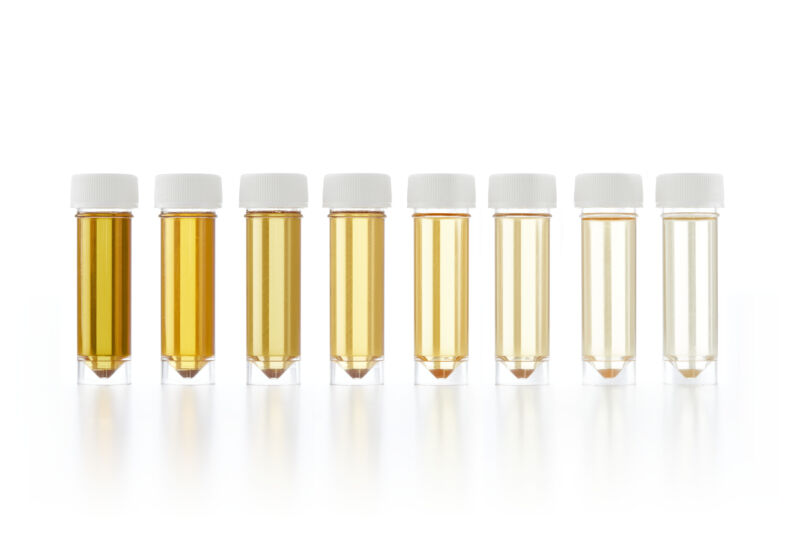It isn’t from eating corn —
The yellow color comes from bacteria metabolizing waste from red blood cells.

There are many mysteries in life that we end up shrugging off. Why is urine yellow? It just is, right? Rather than flush that 125-year-old question down the toilet, scientists sought out the answer, discovering a previously unknown microbial enzyme was to blame.
The enzyme that has eluded us for so long is now known as bilirubin reductase. It was identified by researcher and assistant professor Brantley Hall of the University of Maryland, who was part of a team based at the university and the National Institutes of Health.
Bilirubin is an orange pigment released by red blood cells after they die. Gut microbes then use bilirubin reductase to break down bilirubin into colorless urobilinogen, which degrades into yellowish urobilin, giving urine that infamous hue. While urobilin previously had an association with the color of urine, the enzyme that starts the process by producing urobilinogen was unknown until now.
“Though it was previously thought that multiple enzymes were involved in the reduction of bilirubin, our results support the finding that a single enzyme performs the reduction of bilirubin to urobilinogen,” the research team said in a study recently published in Nature Microbiology.
Gut feeling
Because some gut bacteria had been known to reduce bilirubin, Hall and his team knew where to start but wanted to fill in the unknowns by finding out which particular species actually do this—and how. This meant they had to find the gene responsible for encoding bilirubin reductase.
Previous studies had found that the species Clostridiodes difficile was capable of reducing bilirubin (though the mechanism it used was unknown). Using C. difficile as a basis for comparison, the team cultured different species of gut bacteria and exposed them to bilirubin to see whether that bacteria could produce urobilinogen, detecting its presence using a fluorescence assay.
The fluorescence assay told Hall and his colleagues that there were nine strains within the tested species that they thought were capable of reducing bilirubin, although how these bacteria were breaking it down was still unclear. After the fluorescence assay, the genomes of the most closely related strains were analyzed, and several turned out to share a gene that encoded an enzyme that could reduce bilirubin—bilirubin reductase.
Bacterial strains that metabolized bilirubin using bilirubin reductase all came from species that were found to belong to a single clade (the researchers informally referred to it as the bilirubin reductase clade). Within that clade, most of these species are from the class Clostridia in the phylum Firmicutes, a phylum of bacteria important to gut health.
More than … you know
The discovery of bilirubin reductase goes beyond the origin of urine color. After identifying the enzyme, the researchers found out that, while bilirubin reductase is present in healthy adults, there is a deficit in newborns and adults with inflammatory bowel disease, which could eventually influence future treatments
By sequencing infant gut genomes, Hall and his team saw that bilirubin reductase was often missing during the first few months of life. Too much bilirubin building up in the blood turns the skin and the whites of the eyes yellow, a symptom known as jaundice. Most infants have some level of jaundice, but it usually goes away on its own.
The absence of bilirubin reductase is also associated with pigmented gallstones in adults with inflammatory bowel disease (inflammatory bowel disease or IBD is a general term that can refer to several different diagnoses). Sequencing adult gut genomes showed that there was a deficit of this enzyme in most patients with Crohn’s disease or ulcerative colitis whose gut genomes were sequenced.
“With the knowledge of the species, genes, and enzymes involved in bilirubin reduction, future research can now focus on the extent to which gut microbial bilirubin metabolism affects…the role of bilirubin reduction in health and disease,” the researchers said in the same study.
There is still more research to be done on bilirubin reductase and the health implications it could have. The team thinks there may be a link between the amount of urobilin produced in the body and insulin resistance, obesity, heart disease, and even heart failure. Next to that, we finally know why urine is yellow.
Nature Microbiology, 2023. DOI: 10.1038/s41564-023-01549-x